Mondrian in Action: Open source business analytics
William D. Back, Nicholas Goodman, and Julian Hyde

Copyright
For online information and ordering of this and other Manning books, please visit www.manning.com. The publisher offers discounts on this book when ordered in quantity. For more information, please contact
Special Sales Department Manning Publications Co. 20 Baldwin Road PO Box 261 Shelter Island, NY 11964 Email:
orders@manning.com2014 by Manning Publications Co. All rights reserved.
No part of this publication may be reproduced, stored in a retrieval system, or transmitted, in any form or by means electronic, mechanical, photocopying, or otherwise, without prior written permission of the publisher.
Many of the designations used by manufacturers and sellers to distinguish their products are claimed as trademarks. Where those designations appear in the book, and Manning Publications was aware of a trademark claim, the designations have been printed in initial caps or all caps.
 Recognizing the importance of preserving what has been written, it is Mannings policy to have the books we publish printed on acid-free paper, and we exert our best efforts to that end. Recognizing also our responsibility to conserve the resources of our planet, Manning books are printed on paper that is at least 15 percent recycled and processed without the use of elemental chlorine.
Recognizing the importance of preserving what has been written, it is Mannings policy to have the books we publish printed on acid-free paper, and we exert our best efforts to that end. Recognizing also our responsibility to conserve the resources of our planet, Manning books are printed on paper that is at least 15 percent recycled and processed without the use of elemental chlorine.
 | Manning Publications Co.20 Baldwin RoadShelter Island, NY 11964 | Development editor: Susanna KlineCopyeditor: Andy CarrollProofreader: Janet VailTypesetter: Gordan SalinovicCover designer: Marija Tudor |
ISBN 9781617290985
Printed in the United States of America
1 2 3 4 5 6 7 8 9 10 MAL 18 17 16 15 14 13
Brief Table of Contents
Table of Contents
Preface
I joined Pentaho in 2011 with only a vague notion of business analytics or Mondrian and was told by my boss at the time that I should focus on becoming the Mondrian expert on the team. As I do when learning any new technology, my first action was to create a personal project to implement. In addition to my personal efforts, I was also assigned to support several clients dealing with Mondrian-related challenges.
As I started looking at the documentation and learning Mondrian, I quickly discovered that useful information was in multiple places, including the Mondrian site, forums, product websites, best practices, and even just in the heads of people who had been working with Mondrian for a while. To help myself, I began gathering notes together in one location and got the idea that a book on Mondrian would be very helpful.
After some encouragement from various friends and coworkers, I contacted Julian Hyde, who also recommended Nick Goodman for the project. Together we agreed that it was a good idea, so we started checking around for reputable publishers. Since I already had a shelf, both physical and virtual, full of Manning books, it wasnt really a difficult choice.
This book is the work of the authors over the course of more than a year, but contains information created by multiple developers and communities over a decade. If youre already using Mondrian, I hope youll find this a useful reference and learn a thing or two, particularly about the upcoming Mondrian 4.0. If youre new to Mondrian, then I hope youll find this a useful learning tool that covers both the basics and advanced topics. No matter where you fall on the Mondrian knowledge scale, I hope youll find this book and the tools contained in it a useful aid in helping businesses make better decisions.
W ILLIAM B ACK
About this Book
This book is about Mondrian 4.0 and related technologies. Its organized into chapters based on functionality. Chapters are designed to be standalone in most cases, but its easier, especially for beginners, to start at the beginning and work through the chapters of interest in order. Depending on your role in the organization, different chapters will be more relevant than others.
Intended audience
This book is targeted at four general types of users:
The business analyst is the person who will use Mondrian to perform analysis. This reader mainly wants to use Mondrian and the related tools, not necessarily understand all of the inner workings, such as configuration and database format.
The data warehouse architect is the person whos responsible for setting up the data for Mondrian for business analysts to use. This person makes it possible for analysis to be fast and easy.
The business intelligence enterprise architect is responsible for making Mondrian work within the enterprise. This includes installation, configuration, scaling, and security.
Finally, application developers will want to learn how to integrate Mondrian in their own applications. Integration approaches include embedding the Mondrian engine into your application as well as using Mondrians web services to get data.
Roadmap
Heres what youll learn in each chapter:
- introduces you to business analytics and why youd want to use a tool like Mondrian. After reading this chapter you should have an understanding of the problem that Mondrian is trying to solve. Youll also understand how Mondrian fits into the larger business analytics architecture.
- gives you a high-level overview of Mondrian and how it works to support the enterprise. This chapter provides general context for most of the rest of the book. By reading this chapter you should understand what Mondrian can do for your organization.
- introduces the concept of star schemas and data marts. This chapter explains why and how to organize the data for maximum effectiveness with Mondrian. After finishing this chapter youll understand why certain data organization is better than others and how to create data marts for your solution.
- presents the fundamentals of the Mondrian schema. This schema logically describes the data in the database. Youll be able to create your own schemas for analysis after reading this chapter.
- youll know the vast majority of all Mondrian schema features.
- introduces the concept of roles and security. Youll learn how to restrict access to data for users based on their rolefor example, limiting cost information to cost accountants and financial managers.
- talks about how to maximize Mondrian performance. In particular youll learn how to create and configure aggregate tables and use advanced in-memory caching features to make analysis with Mondrian even faster.
- revisits the question of security to include dynamically setting access to data as well as support for multi-tenancy. This chapter is of particular interest to anyone managing a large-scale Mondrian installation with many users, including external clients.
- talks about how Mondrian is used within Pentaho, the leading open source business analytics framework. You will learn how to use Mondrian as a source for analytics, reporting, and dashboards. This chapter also describes using Mondrian with the Community Dashboard Framework, a popular open source plug-in for Pentaho.
- is for the developers who want to either embed Mondrian into their application or use it as a source of analytics data. Detailed examples are provided to help you create your own solutions.
- wraps up the book with an overview of some advanced analytics topics. It shows how to perform advanced analytics within Mondrian and use popular data mining tools. We also place Mondrian in the Big Data landscape.

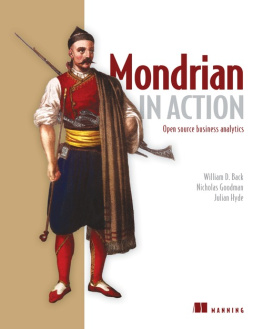
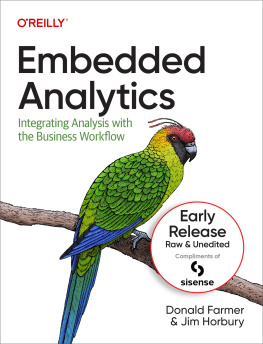
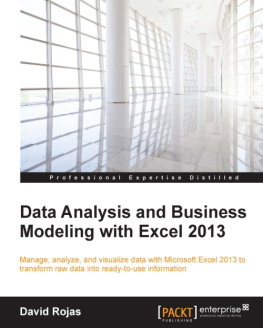
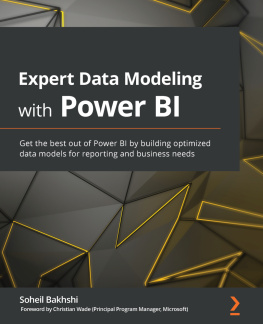
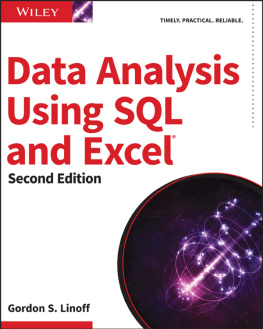

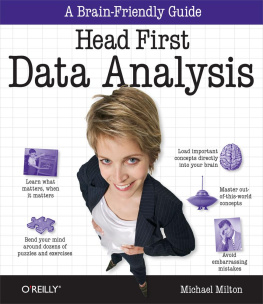
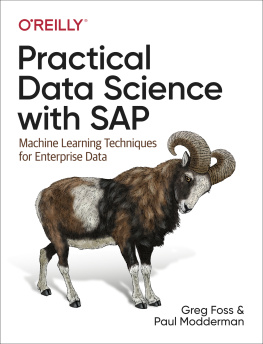
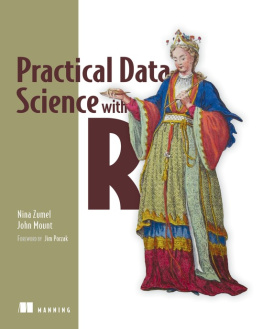
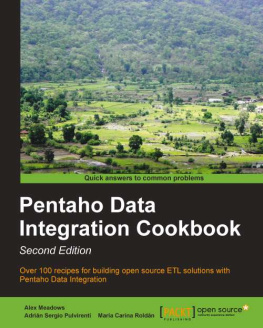
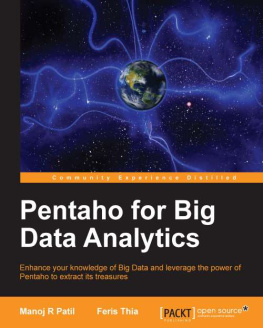

 Recognizing the importance of preserving what has been written, it is Mannings policy to have the books we publish printed on acid-free paper, and we exert our best efforts to that end. Recognizing also our responsibility to conserve the resources of our planet, Manning books are printed on paper that is at least 15 percent recycled and processed without the use of elemental chlorine.
Recognizing the importance of preserving what has been written, it is Mannings policy to have the books we publish printed on acid-free paper, and we exert our best efforts to that end. Recognizing also our responsibility to conserve the resources of our planet, Manning books are printed on paper that is at least 15 percent recycled and processed without the use of elemental chlorine.